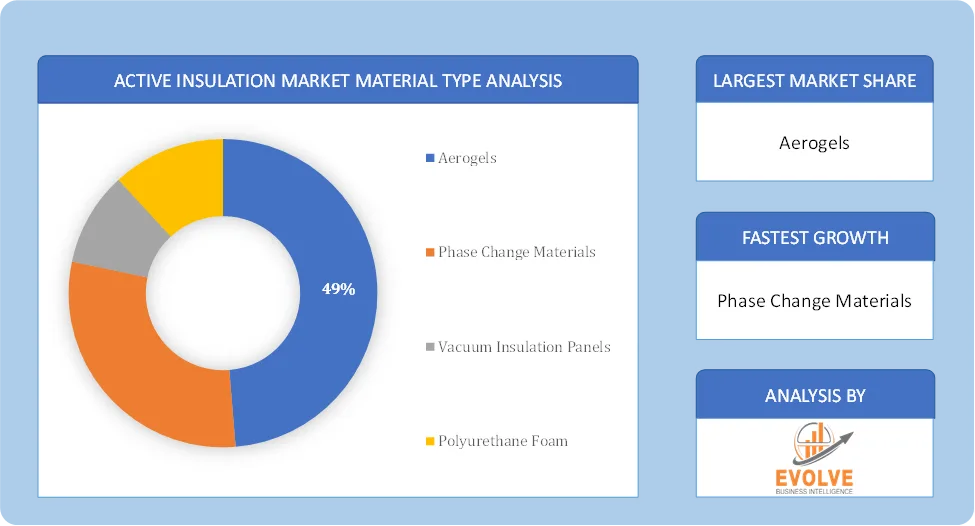Active Insulation Market to Reach USD 5.88 Billion by 2034

Evolve Business Intelligence has published a research report on the Global Active Insulation Market, 2024–2034. The global Active Insulation Market is projected to exhibit a CAGR of around 3.85% during the forecast period of 2024 to 2034.
Evolve Business Intelligence has recognized the following companies as the key players in the global Active Insulation Market: Helly Hansen, Vaude, REI, Under Armour, Adidas, 3M, The North Face, Mammut, Columbia Sportswear and Patagonia.
The Global Active Insulation Market is projected to be valued at USD 5.88 Billion by 2034, recording a CAGR of around 3.85% during the forecast period. The active insulation market is experiencing significant growth and is projected to continue on this trajectory in the coming years. Active insulation refers to materials that can dynamically respond to environmental changes like temperature and moisture, providing effective thermal regulation. These materials are utilized across various sectors, including building and construction, textiles, automotive, and aerospace, to enhance energy efficiency, comfort, and performance.
The active insulation market presents significant growth opportunities driven by the increasing demand for energy efficiency, the rising popularity of outdoor activities, and continuous advancements in material technology.
Download the full report now to discover market trends, opportunities, and strategies for success.
Segmental Analysis
The global Active Insulation Market has been segmented based on Component, Organization Size and Vertical.
Based on Material Type, the Active Insulation Market is segmented into Aerogels, Phase Change Materials, Vacuum Insulation Panels, Polyurethane Foam. The Polyurethane Foam is anticipated to dominate the market.
Based on Application, the global Active Insulation Market has been segmented into Building Insulation, Automotive Insulation, Textile Insulation, Electronics Insulation. The Textile Insulation segment is anticipated to dominate the market.
Based on End Use, the global Active Insulation Market has been divided into Construction, Automotive, Aerospace, Consumer Goods. The Manufacturing segment is anticipated to dominate the market.
Regional Analysis
The Active Insulation Market is divided into five regions: North America, Europe, Asia-Pacific, South America, and the Middle East, & Africa. North America driven by increasing government incentives for energy-efficient building practices and a growing trend towards sustainable construction materials. Governments in the U.S. and Canada are implementing stricter building codes and offering incentives for energy-efficient construction, driving the demand for advanced insulation materials. The push towards net-zero energy buildings is also a significant factor. Strong consumer spending power supports the adoption of premium and energy-efficient building materials and high-performance apparel. European consumers and governments place a strong emphasis on sustainable and eco-friendly building materials, favoring active insulation solutions that contribute to reduced energy consumption and lower environmental impact. In Asia-Pacific region, increasing construction activities in residential, commercial, and industrial sectors due to rapid urbanization and industrialization are boosting the demand for insulation materials and expansion in the textile and sportswear industries, particularly in countries like China and India, is driving the demand for active insulation in apparel. Latin America region, urbanization and economic development are leading to increased construction in residential and commercial sectors and rising energy costs and environmental concerns are gradually increasing the adoption of insulation materials. In Middle East and Africa region, growing urban populations and increasing investments in infrastructure projects are driving the demand for insulation materials in the construction sector and the extreme temperatures in many parts of the region necessitate effective insulation solutions in buildings to reduce energy consumption for cooling.



